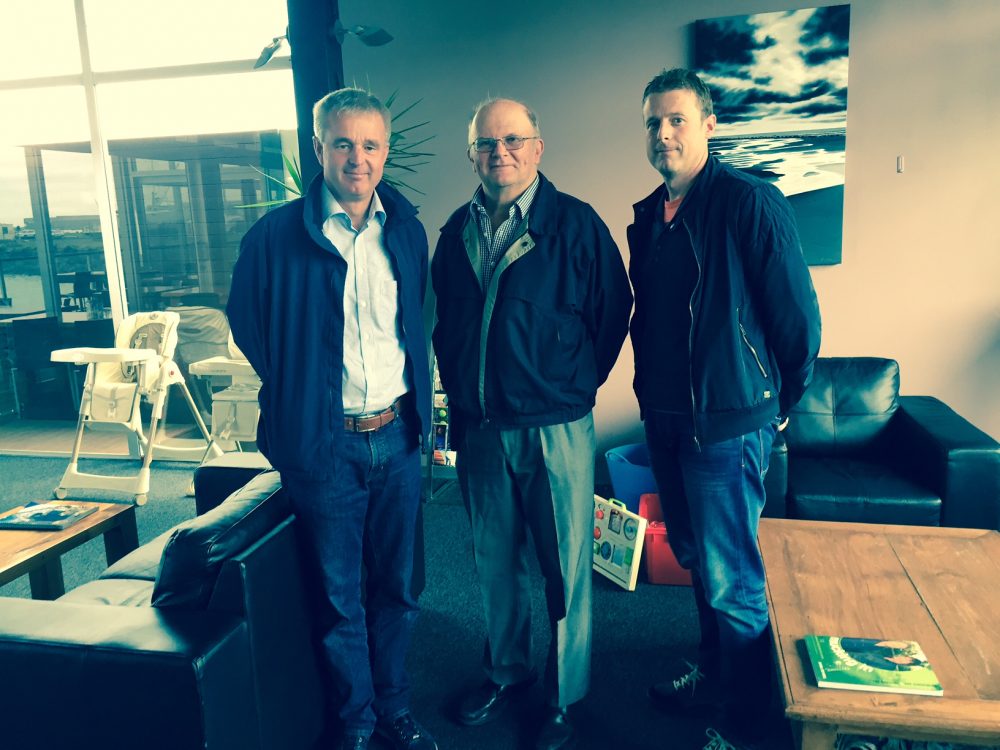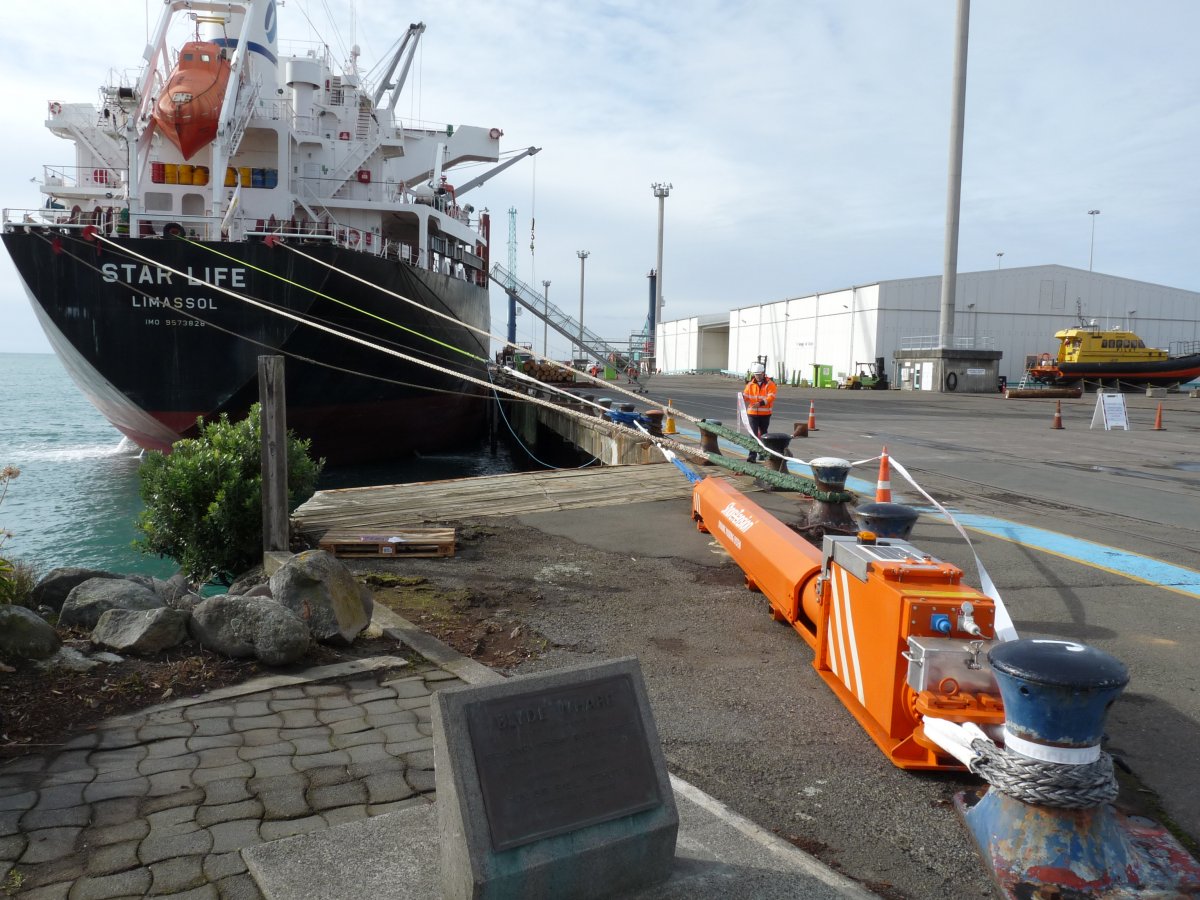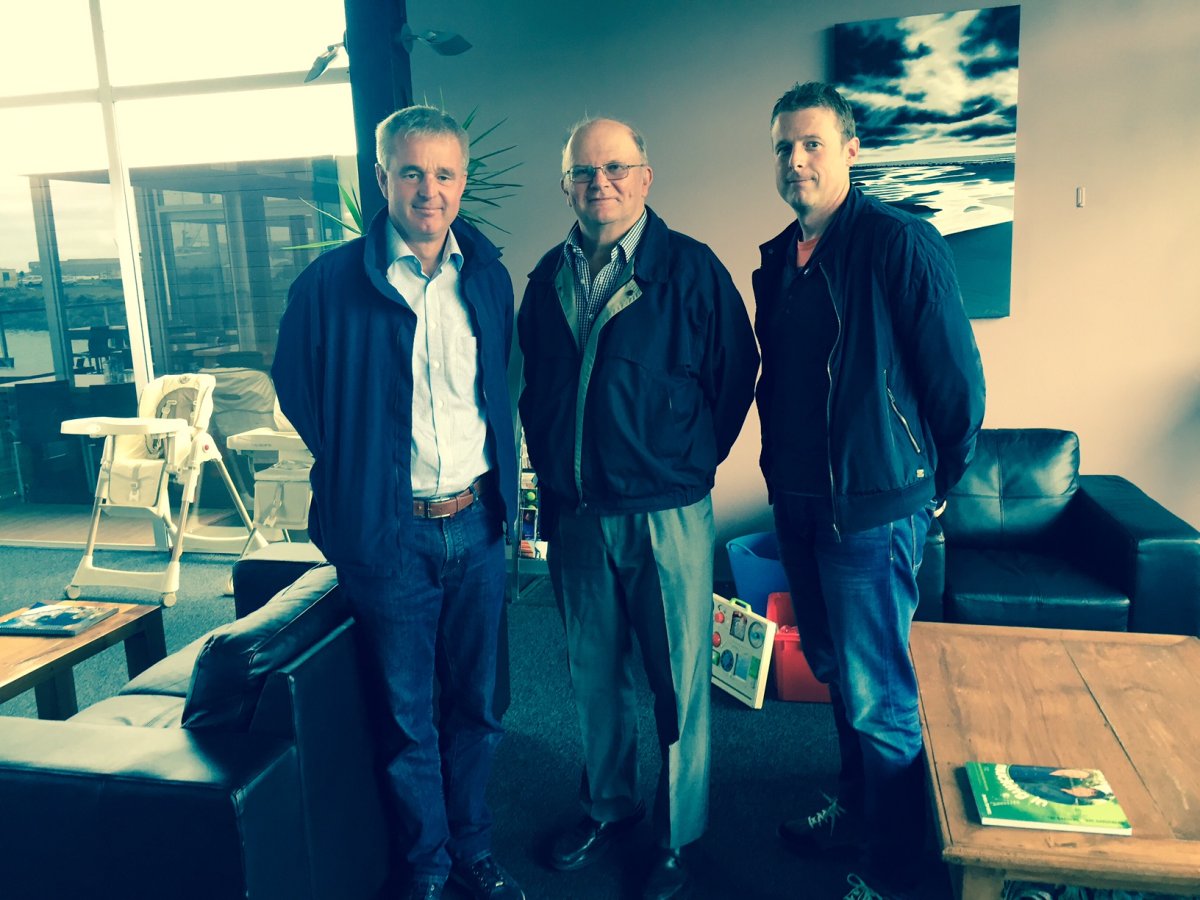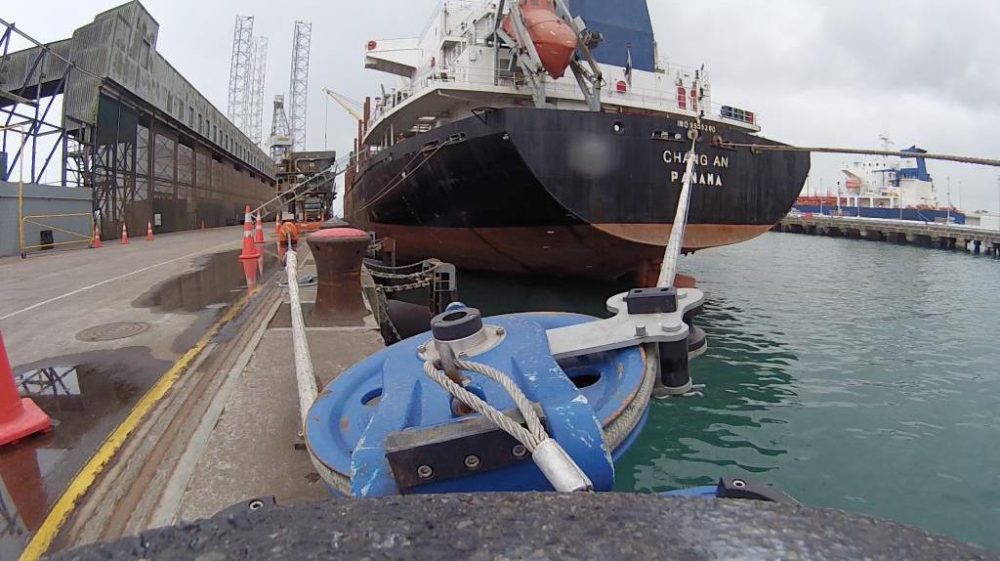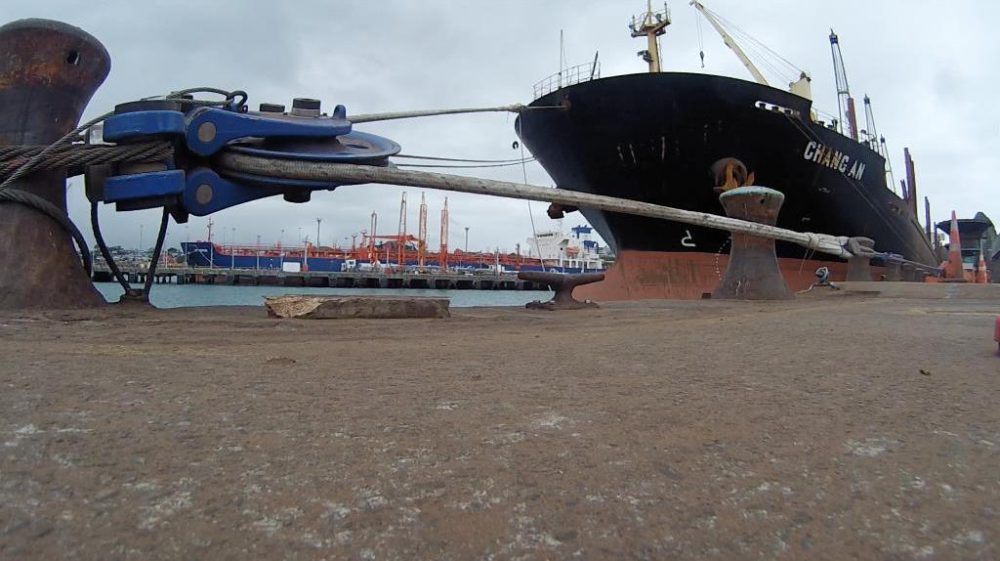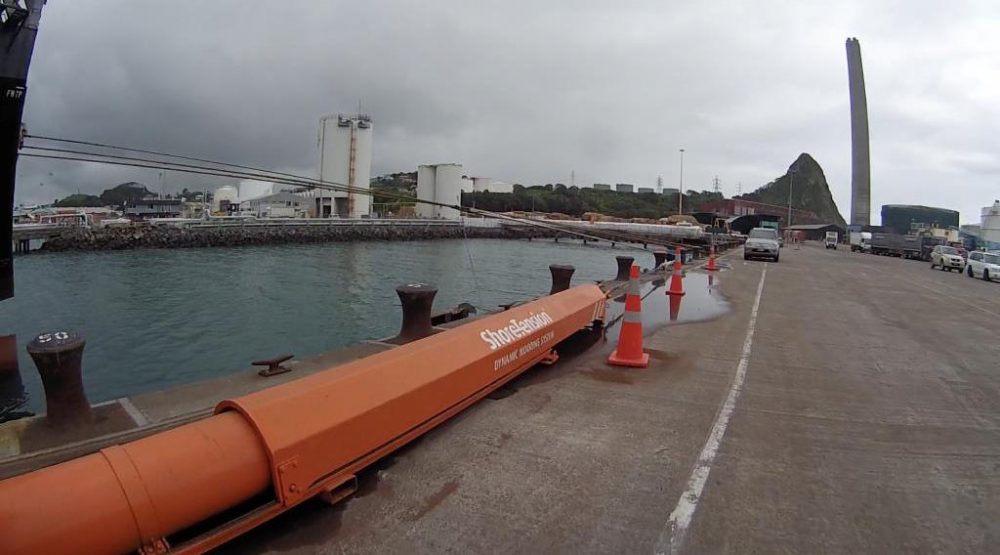ShoreTension proudly announces that the Port of Taranaki, New Zealand purchased 4 more ShoreTension systems. This brings the total number of mooring systems to 8 in the Port of Taranaki. The new purchased ShoreTension units will be intrinsically safe which make them suitable for tanker and LNG berths. During last meeting, ShoreTension used the opportunity to meet with the new and former Harbourmasters Neil Armitage and John Ireland.
Quoted from the Port of Taranaki Limited annual report 2015:
“Captain John Ireland retired in June 2015. Starting at Port Taranaki in 1983 as Pilot/Relieving Officer, John went on to become Marine Services Manager and was also appointed Harbourmaster for the Taranaki Regional Council in 2009. John’s strong focus on safety saw him target a reduction in risk associated with mooring and maintaining vessels in port during adverse weather. Most recently he was instrumental in introducing the new ShoreTension™ system to negate the impact of long period waves. John stated in his farewell speech that he had great comfort knowing “this technology will overcome the problem”. John’s dedication, commitment, and innovative thinking has been significant for the Port of Taranaki”.
Port of Taranaki PORTAL earlier quoted:
“Long Period Waves have long provided ports and vessels with headaches but that looks to be coming to an end at Port Taranaki. Marine Services Manager, Neil Armitage, says “for many years Port Taranaki has evaluated ways to overcome such weather related disruptions. The port’s records show that up to 6.5% of available time for berthing was lost by customers through the swells and finding a solution was a clear priority.” He is confident that deploying recently acquired ShoreTension™ units will significantly alleviate the problem. Port Taranaki is the first port in New Zealand to deploy the cutting-edge technology which is already making a difference after just two months. While Long Period Waves would be a term few laypeople would be familiar with, those involved on the maritime industry would be well aware of the risks they pose to shipping and ports. At Port Taranaki they are generated by swells from the southern ocean and Tasman sea entering the harbour. Ironically the swells aren’t visible to the naked eye as their heights range from a minuscule 5cms to 30cm. But don’t be fooled by that seemingly innocuous statistic. The swells may be small but, because of their length and the volume of water that comes in with them, their effect is potentially destructive. In a relatively short time their patterns actually start ships moving at the berth. Once a 40,000 tonne ship gets moving most mooring lines can’t hold it. That creates all sorts of problems, especially for those workers whose job it is to secure the lines. Overcoming that risk has been front of mind for the Port Taranaki Marine team.
“ShoreTension adds a safe and versatile mooring system to the port and the system is extremely simple and easy to use. It provides an electronic notification of alerts and real time monitoring through smart phones or computers. “The system dramatically reduces the amount of heavy manual labour and removes mooring staff from handling heavy lines under extremely high tension, plus the equipment is easily moved to suit different size vessels. The ShoreTension™ system is reasonably compact and allows minimal distance between vessels allowing us to make better utilization of wharf space.” Guy knows the stakes are high. “We know that container vessels have been affected in the past, but we believe, with the outcomes so far, that previous issues, where the vessels have either omitted or been excluded from the port, could well be a thing of the past.” “It’s also important to note that this has the potential to increase the safety of all personnel involved, and while our record has been first class we are always striving to lift our game and ShoreTension™ will greatly assist at each berth.” “Obviously we’ll be monitoring the performance across the spring equinox. Should the early trends be confirmed, I expect to be in a position to justify an investment in more units later this year.”

